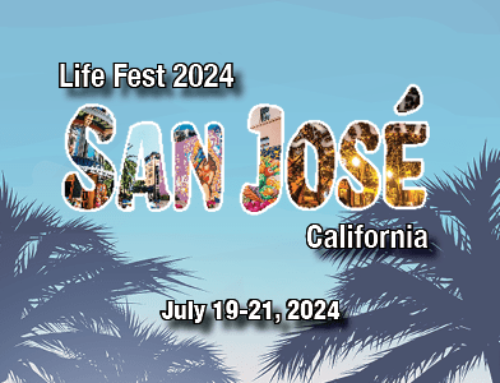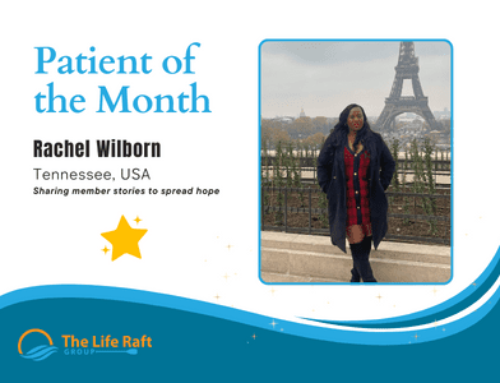Dr. Neeta Somaiah of the MD Anderson Cancer Center joined our Medical Advisory Board this past February and we reached out to ask her a few personal and professional questions so we could share some background on this sarcoma expert with our GIST community.
Background & Early Influences

Dr. Neeta Somaiah
Dr. Somaiah grew up in Delhi, India. Her parents were from a small town in the south, but were both forward thinking, and access to the best education was a priority in their household. Her late father was an engineer and her mother a scientist with a PhD in zoology who eventually became a university professor.
“There was a lot of STEM in my background and I automatically took a liking to it. To be honest, I debated whether or not I would go into engineering as I enjoyed math and physics, but it was my older sister Navita Somaiah who influenced me to go into medicine,” she said. “I wanted to go into medicine based on some of her awe-inspiring experiences in medical school, and in addition her guidance probably helped me ace the pretty rigorous, competitive exams to get into the top medical schools.”
Navita continued to inspire her younger sister as she went through her Radiation Oncology residency. “It wasn’t just about becoming a physician, but my interest in oncology was sparked because of her,” Dr. Somaiah shared, “And perhaps my draw towards academic research was fostered seeing my sister get her PhD (at Oxford). She is currently a clinician scientist at The Institute of Cancer Research, London, and a clinical oncologist at The Royal Marsden.”
Dr. Somaiah credits sarcoma expert Dr. Margaret von Mehren for the guidance in choosing sarcoma as a specialty.
“I didn’t know much about sarcoma during my internal medicine residency with exposure to only a few cases but this changed when I did my fellowship at Fox Chase Cancer Center in Philadelphia and had the opportunity to work with Meg (Dr. von Mehren). I was offered a position to stay on a faculty at Fox Chase and choose a specialty to focus on. By then my fascination for sarcoma had begun and I started my career as a lung and sarcoma oncologist. A I gained more clinic and research experience, I was drawn to the many unanswered questions in the sarcoma field and the many unique subtypes,” she explained, “In lung, you had pharmaceutical companies approaching you with trials, and willing to fund your ideas. In sarcoma, when I started it wasn’t the same, I was the one approaching pharma companies wanting to study their agents, but they were mostly not interested. Things have thankfully changed in the last 10 years. The other major attraction was the sarcoma community, all the experts in the field were so approachable and inclusive. I automatically felt welcome in this collaborative environment. So, when the opportunity at MD Anderson opened up allowing me to devote all my time to sarcoma, it was a no-brainer.”
Dr. Somaiah says that there are over 50 different varieties of sarcoma with more subsets being defined as we learn more about the molecular pathogenesis. As a sarcoma specialist she ends up seeing all sarcoma patients, but GIST and liposarcoma patients make up the majority of her practice. She talked about what she focuses on at clinic:
“Since we see a lot of sarcoma patients at MD Anderson, we get to do a deeper dive and increase our understanding through research of specific subtypes of sarcoma. My research interests are in GIST, liposarcoma, and sarcoma immunotherapy. I’m grateful to be at a center that allows me to learn from the large volume of patients and the collective wisdom and experience of my fellow sarcoma colleagues.”
Working at MD Anderson in Texas
MD Anderson is one of the largest NCI designated comprehensive cancer centers where there are many sarcoma and GIST specific trials (PEAK, a phase 3 trial focusing on Sutent plus Bezuclastinib – NCT0508047 for advanced and metastatic GIST, is one of them). Physicians are involved in a variety of research projects, teaching fellows and residents, and giving lectures and seminars. Dr. Somaiah commented on how she wears these multiple hats – physician, teacher, researcher, and performing administrative duties for the department and institution.
“It’s quintessential academic medicine to wear all these hats and each of those aspects are very fulfilling in themselves. It’s great to see the fellow trainees reach their potential, it’s a tangible success when you see them excel and choose a career in sarcoma. Research encompasses translational work where we try to learn more about the disease through patient samples, cell lines, and representative tumor-models, clinical research where we bring novel treatments to patients, and then outcomes research where we look back at our clinical experience and learn from it. My research keeps my mind challenged and active.”
Dr. Somaiah’s schedule may seem daunting as she has all these responsibilities as well as being the deputy chair of her department which includes many meetings and administrative tasks, managing and mentoring people, but she says with all this, one of her biggest joys is patient care:
“The one thing I don’t ever want to give up is patient care. To me taking care of patients feeds my passion for research. I take it as my responsibility to do my best for every patient who have entrusted their care to me and when they feel helped and less stressed about their cancer journey, it reduces my burdens and stress as well. I feel enriched by interacting with my patients.”
The LRG Medical Advisory Board
Serving on the LRG Medical Advisory Board complements the forum of GIST experts that joined prior to her tenure. Dr. Somaiah shared her thoughts on several key issues as some of these experts have in the past:
What are the responsibilities of being on a Medical Advisory Board?
Meeting and partnering with other members who are also experts opens your mind to issues you may not be thinking of and gives you an opportunity to provide input. I see myself contributing to understanding the needs of patients and figuring out how to achieve that through the patient advocacy group whether it be improving outreach, getting patients better information, dispensing information, providing support to young investigators so we can have more experts in the field trained to treat this disease. It’s also a great way to try and standardize things to improve access to care. It’s a great thing to not only publish studies but to put out position papers like the one the LRG did on placebo control in trials. These things help the community in general and people notice.”
How does working with a patient advocacy group (PAG) help you as a sarcoma/GIST specialist?
“It helps immensely, especially for rare diseases. It’s a very critical role not only in providing patients with a support structure for a cancer they’ve never heard of before but also giving them valuable information and allowing them to seek out the experts they need in order to direct their care effectively. I wish every patient could have access to information and access to an advocacy site. PAGs provide valuable and technically sound information patients need; helping them understand their disease, reach out to other patients for support, and reach out to experts. As a physician, any service you provide to patients is a service to us. When they get on the right treatment early, it is not only reassuring for patients, but also makes it easier for us, as we usually see them down the line after diagnosis.
It’s a great partnership. Working with PAGs like the LRG, we get the patient perspective and a point of view on what are the critical unmet needs. We were discussing the other day about trying to standardize pathology reports across the country. These projects might not be prioritized by us working in our expert centers. PAGs also provide a means to increase the visibility for our research. We really value these PAGs for all cancer groups but especially for rare diseases.”
What is the importance of biomarker testing?
“A couple of years ago it was very important to research but was mostly done in academic centers. It helped us learn more about the disease and it was predictive of how a patient might respond to drug therapy. But now, it is imperative that every patient get biomarker testing before a patient gets started on TKI therapy. We need to have biomarker testing done because we don’t want to miss the small percentage of people that won’t respond to imatinib (the 1st line drug for most GIST patients). Right now, the primary mutations are key for decision making, but very soon the secondary mutations will be needed to better sequence drug therapies with differential response to secondary mutations.”
What kind of treatments and diagnostics do you see for the future of GIST?
“There’s a lot more work to be done in the immunotherapy space, but there’s hope. We need a better understanding on what patient and mutation profile will benefit. Combination therapy might have value for patients with multiple mutations to get a better response, either by broadening coverage or by inhibiting downstream pathways of alternate signaling. More sensitive TKIs for GIST specific KIT/ PDGFR mutations are also of interest as use early on might delay or prevent resistance. Local therapy options are also increasing thanks to better TKI responses. Effective targeting non-KIT and non-PDGFR mutant GIST remains a big unmet need, and we are now seeing some trials in this space.”
“In terms of diagnostics, I think that most of us are doing liquid biopsy thought I can’t say it’s mainstream in terms of treatment decisions yet, but the more information we collect, the closer we may get to figuring out the correct sequence for an individual patient. As liquid biopsy technology evolves there may be a role in the future for early detection of recurrence.”
You can learn more about Dr. Somaiah and her GIST research and about other GIST experts who are women here: Women in Sarcoma
Our list of global GIST Specialists can be found here.




